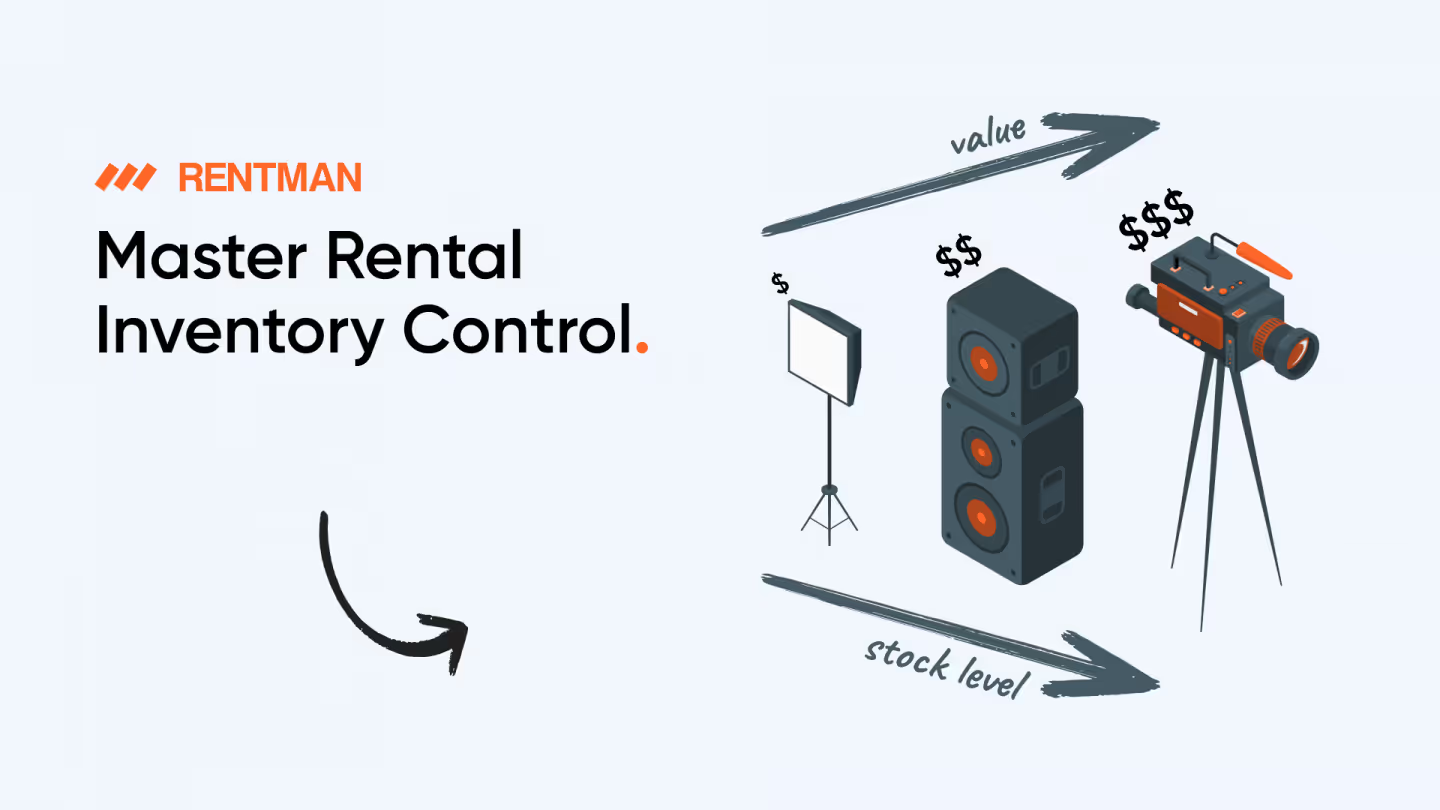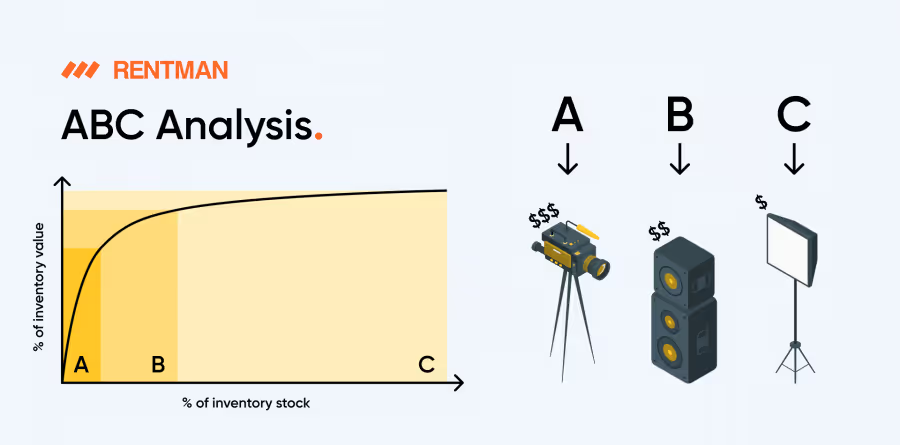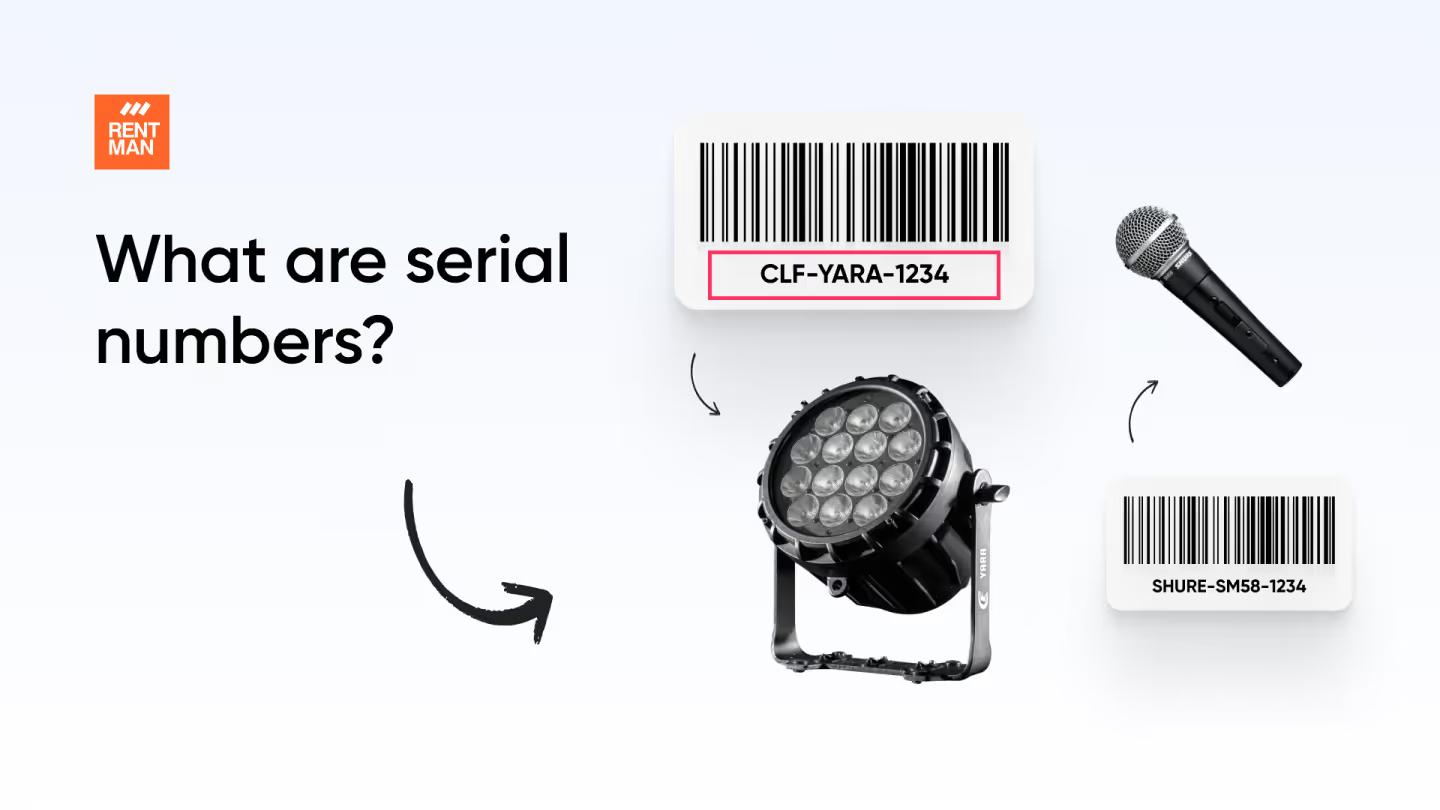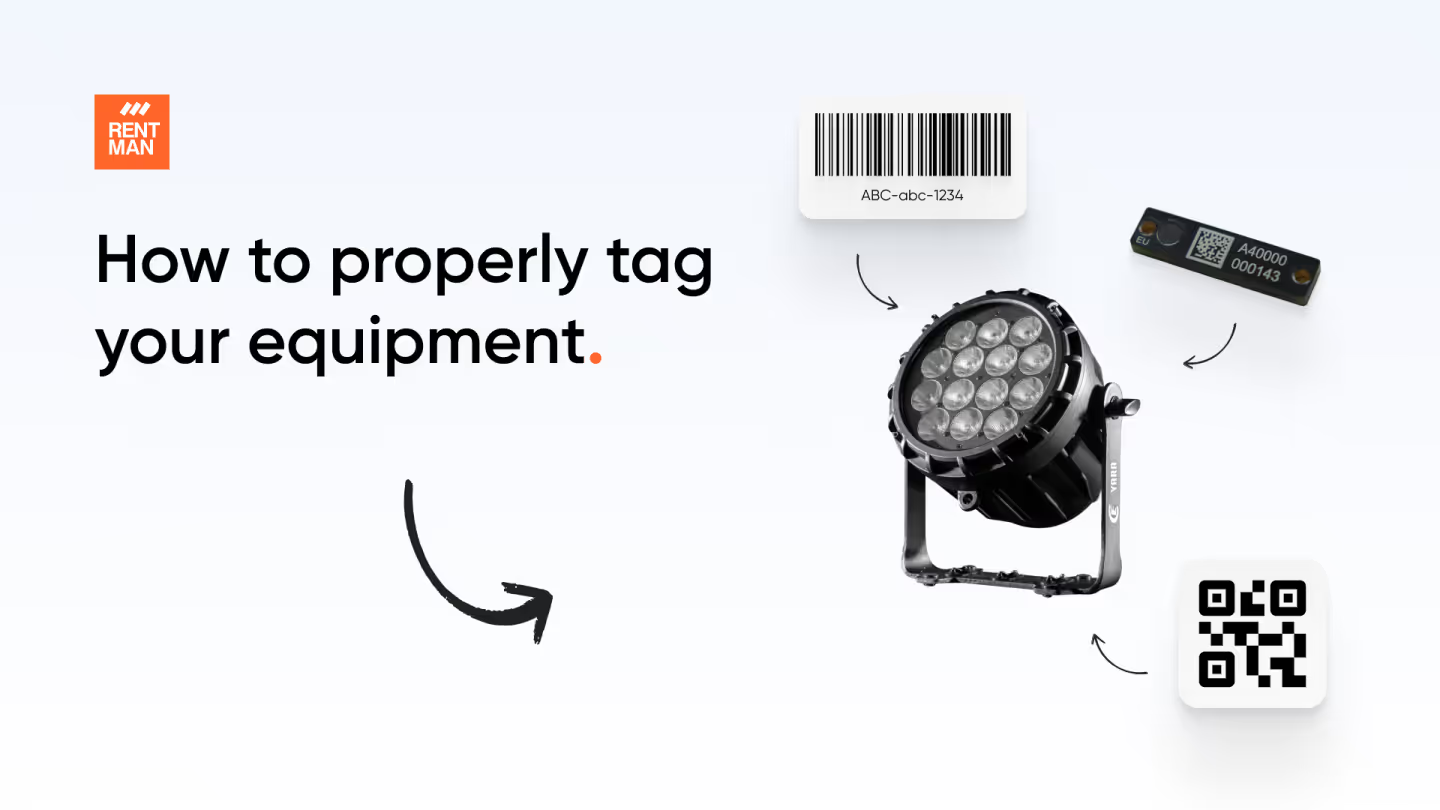Mastering inventory control for equipment rental businesses

Efficient inventory management lies at the heart of thriving businesses, especially in industries like equipment rental, where the availability of assets can make or break a customer's experience. Inventory control is an integral facet of inventory management and provides equipment rental companies with the tools to optimize the inventory control process, streamline operations, and make customers happy.
It also makes planning easier: with real-time insight into inventory, it's simpler to make accurate plans. Let's take a look at the world of inventory control and how it helps thousands of businesses optimize their operations.
1. Understanding Inventory Control
2. Importance of Inventory Control
3. Effective Inventory Control Techniques
4. Examples of Inventory Control
5. Optimizing Inventory Control for Equipment Rental
Understanding Inventory Control
Inventory control, also referred to as stock control, involves the systematic management and oversight of a company's inventory. Its purpose is to facilitate a seamless flow of goods, prevent occurrences of overstocking or stock-outs, and ultimately maximize profitability. It is important to know the differences between inventory control and inventory management.
While inventory management encompasses a wider array of activities such as procurement, storage, and distribution, inventory control narrows its focus to the monitoring quantities and statuses of equipment. This means making timely adjustments and optimizing inventory levels. See the table below for a comparison:
Importance of Inventory Control
In the dynamic world of equipment rental, inventory management brings many benefits, such as:
- Rental demand fulfillment: Good inventory control ensures availability of equipment to meet customer demand, so that planners know what is available when, reducing stress, winning jobs, and keeping clients happy.
- Resource efficiency: By making optimal use of your inventory along the supply chain, you have visibility into redundant and unused equipment.
- Cost optimization: Well-managed inventory minimizes holding costs linked to excess assets and rush expenses resulting from stock-outs.
- Customer satisfaction: Efficient inventory control leads to consistent equipment availability, leading to smoother processes and fostering higher customer satisfaction and loyalty.
- Overstock prevention: Controlled inventory helps you keep track of excess equipment by following proper inventory control, liberating storage space and capital and preventing excess inventory from accumulating.
As you can see, real-time visibility into inventory and crew availability is critical. Planners often find themselves managing multiple sources of information, which leads to gaps in communication and a lack of reliable, real-time updates. This fragmentation creates room for errors, such as double-bookings or missed updates, which in turn increase costs due to last-minute rentals and logistical shifts. By centralizing real-time data on equipment availability and project timelines, planners can reduce redundancies and ensure smoother, more efficient operations.
Finding ways to give planners control over the production flow, make quick adjustments when issues arise, and achieve a level of oversight that reduces stress and drives better financial outcomes for each project, is essential to success — and effective inventory control.
Effective Inventory Control Techniques
To achieve optimal inventory control, there are various types of inventory control methods to apply through inventory control systems, including:
- ABC analysis: Categorizing equipment items based on rental value, focusing efforts on high-value assets.

Did you know? High-value assets are typically worth 70% of the whole inventory value, while only accounting for 10% of the inventory level. The same thing goes for low-value assets, as they account for 10% of the total value while typically occupying 70% of the inventory level.
- Just-In-Time (JIT) inventory: Ordering equipment as needed to meet client demands, trimming holding costs.
- Safety inventory: Maintaining a buffer of critical equipment to counter stock-outs during unexpected demand surges.
- Economic Order Quantity (EOQ): Calculating the optimal order volume, minimizing total inventory expenses.
- Serial number tracking: Assigning unique identifiers to each equipment piece for streamlined tracking and management.

By applying these techniques, equipment rental firms can tailor their inventory control approach to their industry demands and specific asset portfolio.
Examples of Inventory Control
Take an equipment rental company specializing in lighting solutions as an example. Through smart inventory management, this company can maintain an ideal assortment of lighting equipment while avoiding overstocking or shortages.
One effective technique is the ABC Analysis. This involves categorizing lighting equipment based on usage frequency and value. High-demand items like versatile LED panels for concerts could fall under Category A, while moderately used equipment like stage lighting for corporate events might be in Category B. This approach helps allocate resources wisely while keeping an accurate physical inventory of high-demand items, ensuring sufficient inventory of high-demand items while optimizing storage for others.
By embracing methods like ABC Analysis, event equipment rental companies elevate inventory control, ensuring seamless event experiences aligned with client needs.
This allows for more efficient planning and use of inventory, real-time visibility across inventory, and tighter budget control.
Optimizing Inventory Control for Equipment Rental
To optimize your inventory management, take into account the specific wishes and requirements for your field and choose the techniques that suit you based on that. By leveraging advanced solutions like Rentman's Inventory Control Software, you can streamline your inventory management workflows and achieve remarkable results.
To streamline your inventory control processes, consider implementing an inventory control system with a QR code or barcode system.
Conclusion
In the vibrant landscape of equipment rental, mastering inventory control is crucial for streamlined operations, cost-efficiency, and customer satisfaction. By comprehending its significance, implementing relevant techniques, and utilizing inventory control software like Rentman, equipment rental enterprises can find the perfect balance between optimal inventory levels and seamless operation.
Whether managing equipment rentals for events or navigating other asset-driven domains, controlling your inventory is the foundation for lasting success.
For deeper insights into inventory management, delve into our Guide to Inventory Counting Methods.
FAQ
Q&A
Frequently asked questions
Answering Your Inventory Control Questions
The four inventory control types are ABC Analysis, Just-In-Time (JIT) Inventory, Safety Stock, and Economic Order Quantity (EOQ). We would like to add a fifth type to these and that is Serial Number Tracking.
The three core inventory control techniques in equipment rental are Reorder Point Control, Periodic Equipment Review, and Asset Tracking Systems.
Conducting inventory control in equipment rental involves monitoring equipment levels, setting reorder points, implementing tracking systems, and leveraging various techniques to maintain optimal inventory levels.
An example of inventory control in equipment rental is a company adapting rental quantities based on historical demand patterns to avoid stock-outs and overstocking.
Previous blog posts

How a serial number works and why you should use it
How a serial number works and why you should use it

How to set Asset Tags for your Equipment: A Comprehensive Guide for Rental Businesses
How to set Asset Tags for your Equipment: A Comprehensive Guide for Rental Businesses

